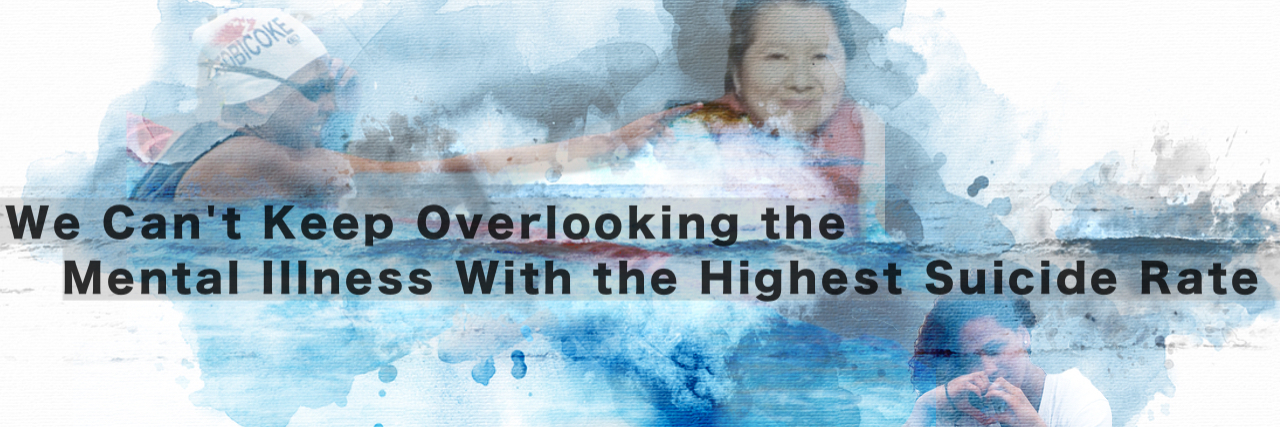We Can't Keep Overlooking Borderline Personality Disorder: The Mental Illness With the Highest Suicide Rate
Editor's Note
If you experience suicidal thoughts or have lost someone to suicide, the following post could be potentially triggering. You can contact the Crisis Text Line by texting “START” to 741741.
When Dee Chan feels suicidal, it completely overtakes her.
She says it’s like standing on a beach, watching a tsunami wave coming straight for her. She can’t outrun it. She can’t swim through it. She can’t get away from it. So she just stands there, helpless, waiting for it to knock her down and drag her out to sea.
But tsunamis aren’t just one wave. The tsunami earned the nickname “wave train” because once it starts, the destructive waves keep coming and coming. This has certainly been the case in Chan’s life — once the tsunami of suicidal feelings starts, it’s hard for her to believe the waves will ever cease.
The first wave hit when Chan was 16 years old. Without warning, classmates she had been friends with since grade school abruptly cut her out of their lives. When she tearfully asked why, they told her they just didn’t like her anymore.
“I just basically ceased to exist in their universe,” Chan told The Mighty.
Then she discovered she was pregnant.
At age 16, she and her then-boyfriend went to get an abortion. He broke up with her right after the procedure.
“Those two things were really what pushed me over the edge,” Chan said. “I made my first suicide attempt after he dumped me.”
Chan lives with borderline personality disorder (BPD), a mental illness characterized by unstable relationships and extreme difficulty regulating one’s emotions. It affects approximately 1.7 percent of the general population.
One of the nine hallmark symptoms of BPD is suicidality. BPD also happens to be the mental illness with the highest suicide rate.
This was not the first (or last) time Chan would experience the pain of abandonment — nor would it be the last time she would feel crushed by a tidal wave of suicidal feelings threatening to pull her under.
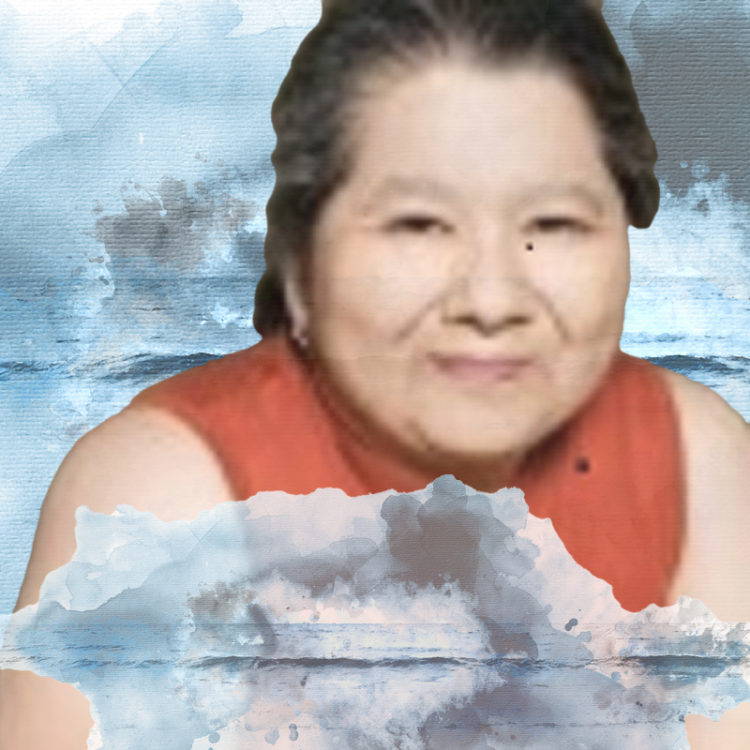
The Stigma of Borderline Personality Disorder
When she was just six months old, Chan’s biological mother abandoned her in the garden of an orphanage in Seoul, Korea. She now recognizes this first trauma left her with an instinctual, child-like response to real or perceived abandonment in adulthood.
“[When I feel abandoned], I feel inconsolable, like there is no one who can help me,” Chan explained. “I’ve learned how to help myself, but I always feel like I’m in a panic.”
Chan has tried to end her life on many occasions — most often when she feels abandoned. She attempted suicide more than a dozen times during two particularly difficult years, with each attempt becoming more and more serious. She said whenever things became emotionally overwhelming, she looked to suicide as an “escape hatch.”
Chan is not the only person with BPD who has felt overwhelmed by suicidality. Perry Hoffman, Ph.D., president and co-founder of the National Education Alliance for Borderline Personality Disorder (NEA.BPD), said up to 80 percent of people diagnosed with BPD attempt suicide. Researchers estimate approximately 3 to 10 percent of people with BPD die by suicide.
These statistics are particularly devastating because BPD is treatable. Unlike some mental illnesses that require lifelong maintenance and treatment adjustment, people with BPD who receive effective skills-based treatment and support can fully recover and no longer meet the criteria for the diagnosis.
Unfortunately, BPD is one of the most stigmatized mental illnesses out there. Articles about how people with BPD are “toxic” and “untreatable” litter the internet.
“If you go on the internet and you read up on borderline personality disorder, you want to take the computer and throw it out the window,” Dr. Hoffman said. “What’s on the internet makes you feel that there is no hope, nothing’s going to change and that this is going to be a lifelong illness.”
Clinicians and laypeople alike can harbor ill feelings toward people with BPD due to a misunderstanding of the painful symptoms they exhibit. This stigma can prevent people with BPD from being diagnosed correctly (or early enough) and having access to the life-saving treatment they need.
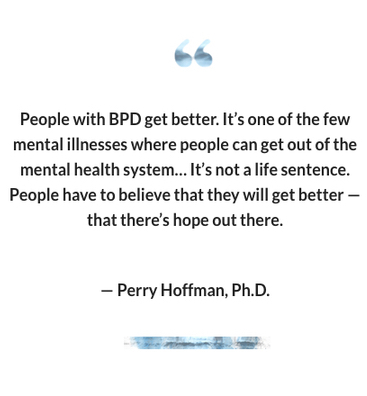
“People with BPD get better. It’s one of the few mental illnesses where people can get out of the mental health system… It’s not a life sentence,” Hoffman told The Mighty. “People have to believe that they will get better — that there’s hope out there.”

The Pain of Borderline Personality Disorder
For those who aren’t familiar with the condition, one of the best descriptions of what it’s like to live with the pain of BPD comes from Marsha Linehan, Ph.D., a researcher who struggled with BPD herself and developed what is now considered the “gold standard” treatment for BPD — dialectical behavior therapy (DBT).
“Borderline individuals are the psychological equivalent of third-degree-burn patients,” Dr. Linehan said. “They simply have, so to speak, no emotional skin. Even the slightest touch or movement can create immense suffering.”
Every person with BPD experiences the condition a little differently, but oftentimes a person with BPD will act out in painful ways (to themselves and others) in an effort to cope with the extreme emotional pain they feel. Chan said she often struggled with rage in her interpersonal relationships — another classic symptom of the diagnosis.
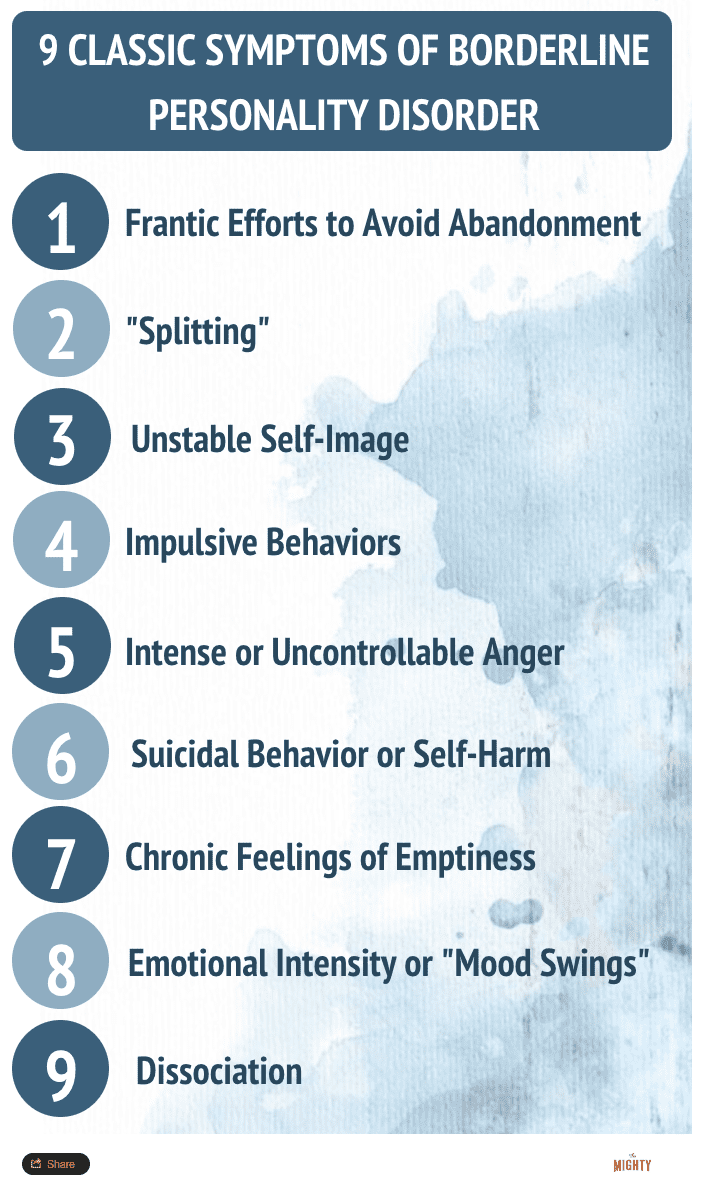
“My biggest issue was always anger… Whenever my anger would come out, it was always very explosive. It would just kind of erupt and I would completely destroy the relationship,” she explained. “That was a really horrible thing for me. I hated that part of myself.”
People with BPD seldom intentionally try to hurt their loved ones with their painful behaviors. In fact, those with BPD often report high levels of shame after lashing out during a crisis.
After a rage episode, Chan said she would feel consumed by guilt. “I’d feel really depressed, and I’d turn all that in on myself. I would resort to self-harm behavior to try to cope with it. And this was a cycle for me.”
Self-destructive behavior is a common way people with BPD try to regulate their intense emotional experiences.“When people get highly emotionally dysregulated, their thoughts turn to self-injuring to calm themselves, or suicide to end their lives,” Hoffman explained. “People say it’s is a call for attention, but how we understand it is that it’s a way of expressing one’s distress… it’s really their language for expressing the pain they’re in.”

The Importance of Diagnosing Borderline Personality Disorder Early
Mike Menu and Lynn Courey’s daughter Sasha Menu Courey died by suicide in 2011 at age 20. A few months before she passed away, Sasha was diagnosed with borderline personality disorder.
“The reason why she died, it’s not because she didn’t want to live, it’s because she couldn’t live with that excruciating pain,” Courey told The Mighty. “On her dying bed, she told us that she was sorry… but she couldn’t live with BPD anymore.”
Sasha’s death wasn’t the first time she attempted suicide. Like Chan, she made her first suicide attempt at age 16. Courey said when looking back on Sasha’s journey, this was the moment that could have been the turning point for her recovery had Sasha been diagnosed with BPD then. “I truly believe this was the biggest miss,” Courey said.
From the outside, Sasha’s life seemed to be going well. She was a college-bound competitive swimmer with her whole life ahead of her. But within her, crushing waves of suicidal thoughts ebbed and flowed.
The help Sasha received after her first suicide attempt was inadequate. Medical professionals dismissed her mental health struggles, calling it “teen angst.”
“Sasha saw a psychiatrist a couple times [after her suicide attempt] and after two months they said, ‘We’re sorry but there’s nothing we can do for your daughter, she’s too young to be diagnosed. It looks like teen angst, and she’s not cooperating so we’re going to let her go,’” Courey said. She was disheartened to learn there was nothing they could do to help their daughter.
Except there was.
The pervading belief in many clinical circles is that you cannot diagnose BPD before an individual reaches adulthood.
“There’s a myth that you can’t diagnose under 18,” Hoffman told The Mighty. “And what we say is that you have to diagnose under 18.”
The NEA.BPD started an initiative called the Global Alliance for Early Prevention and Intervention to address myths surrounding early diagnosis of BPD. The goal of the initiative is to educate clinicians in early prevention so they can offset the development of the disorder and better serve their patients.
The NEA.BPD believes refusing to diagnose BPD under age 18 denies patients and their families the opportunity to make informed and evidence-based treatment decisions, which can ultimately harm a young person’s health prospects.
Due to stigma, some might think avoiding an official BPD diagnosis for themselves or their child might be the right thing to do. But April Foreman, Ph.D., licensed psychologist and executive board member at the American Association of Suicidology, told The Mighty that getting the correct diagnosis is one of the most important steps you can take when it comes to getting well.
“Get the diagnosis. Get it right, and if you are not getting better within a few months, get a change in your treatment plan,” she said.
Menu and Courey believe if Sasha had been diagnosed with BPD (or at least with BPD traits) sooner, she might still be alive today. Had she been given a diagnosis at age 16 right after her first suicide attempt, Menu said, she would have had four years of skills she could have used to manage her emotions before age 20, when she passed away.
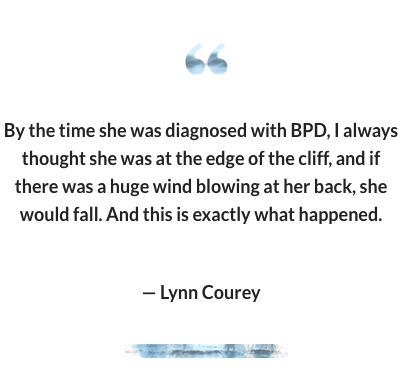
“By the time she was diagnosed with BPD, I always thought she was at the edge of the cliff, and if there was a huge wind blowing at her back, she would fall. And this is exactly what happened,” Courey said. “But imagine if they would have given a diagnosis. She would have had access to treatment and then at the beginning, it would have been a lot easier.”
Both Menu and Courey are big believers in early diagnosis because the sooner maladaptive coping mechanisms are addressed, the less pain an individual with BPD and his or her family members will experience.
“I always imagine [people with BPD] as if they were like roses. They have so many thorns everywhere that no one can approach them without being hurt,” Courey explained. “But if we approached them and were taking care of them when they were young, it wouldn’t be as difficult to reach them. This is why early diagnosis is so important.”

Who Stays the Course in Borderline Personality Disorder Recovery
Common BPD behaviors like frequent suicide attempts, self-injury, uncontrollable rage episodes and alternating between “clingy” behavior and pushing everyone away can make it difficult to stay in a relationship with someone with BPD. Dr. Foreman put it this way:
People with borderline personality disorder often behave in ways that very soon [make] their environment resist helping them — even when they should. So people with BPD very regularly have people abandon and reject them. They are sensitive to abandonment and rejection because they often are getting rejected more than their other peers. And so they are very fearful and they will do anything to not be rejected… Their social needs are overwhelming to others — they are out of sync with what a neurotypical person might require.
By nature, humans are highly relational beings — and people with BPD are no exception. But how can we show support to people with BPD struggling with suicidality when the very human interaction they need can often be a source of invalidation and pain? Who chooses to stay with a person with BPD for the recovery long-haul — especially when things get hard?
Many people can come and go in a person with BPD’s life, but Hoffman said family members are the ones who truly “stay the course” when it comes to recovery. “Families are truly the first responders and they need to know how to respond when their loved one says they’re suicidal,” she said.
Though they didn’t know as much as they do now about BPD, Menu and Courey were fiercely committed to their daughter’s mental health recovery. The couple spent close to $100,000 on Sasha’s treatment and even relocated to a different part of Canada (where they are from) to be closer to the U.S. hospital where she was being treated.

But as most caregivers know, providing care to a struggling loved one can take an emotional toll. This can be especially true for family members of folks with BPD who have made multiple suicide attempts.
Prior to Sasha’s death, Menu and Courey lived in constant fear of Sasha attempting suicide. Courey told The Mighty she would stay awake at night to make sure Sasha didn’t hurt herself.
“I was so nervous and so traumatized that I couldn’t function myself. She was on my mind all the time,” she said. “I couldn’t function. I wasn’t able to reason properly. It was horrible. It was horrible for us, it was horrible for Sasha.”
Menu echoed this sentiment. “Family members are being traumatized by the traumatic experience of someone trying to end their life,” he said.
Hoffman explained family members can develop post-traumatic stress disorder (PTSD) from living with the painful symptomatology of their loved one with BPD. She said it is incredibly difficult for families to support their loved one with BPD if they are mentally compromised and lacking support themselves.
When someone is released from the hospital following a suicide attempt, the typical protocol is to schedule a follow-up appointment or phone call with a mental health professional. However, no such follow-up exists for family members who almost lost their loved one. Family members are tasked with limiting access to tools their loved one could use to end their life, but aren’t given skills to cope with the persistent fear of their loved one’s suicide.
Courey shared that living in fear of Sasha’s death made her hypervigilant, a classic symptom of anxiety and PTSD that makes an individual overly alert to potential threats.
A hypervigilant caregiver may interpret any action of their loved one as a precursor to a suicide attempt. As a result, they might “hover” around their loved one in an effort to prevent suicide. Not only does this not help someone who has attempted suicide, it’s also not helpful for the caregiver. Being in a near-constant state of anxiety is exhausting to the body and mind and can lead to high levels of “caregiver burden.”

Supporting the “First Responders”
In order to help people with BPD who are struggling with suicidal thoughts, we need to help the people on the “front lines” providing support — the family members.
“I think it’s been a very big hole in the suicide protocols, not engaging families,” Hoffman told The Mighty. “We are very much into teaching the first responders and obviously hospital staff and mental health clinics how to work with suicidal individuals, but we’re not teaching families skills.”
Knowing from her research that family support can be invaluable in improving the clinical outcome of patients with BPD, Hoffman co-created a 12-week course called Family Connections with fellow BPD specialist Alan E. Fruzzetti, Ph.D. The course meets weekly to provide education, skills training and support for family members who support a loved one with BPD.
The course teaches families invaluable DBT skills and provides a support network of other families who have lived through similar experiences.
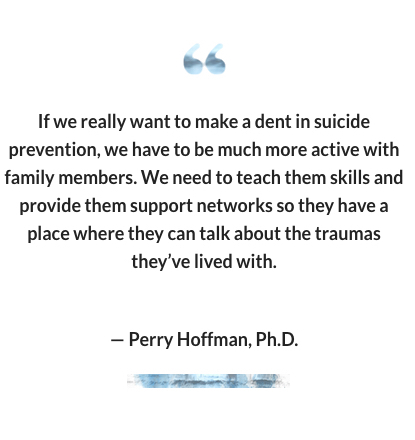
“If we really want to make a dent in suicide prevention, we have to be much more active with family members,” Hoffman said. “We need to teach them skills and provide them support networks so they have a place where they can talk about the traumas they’ve lived with.”
After Sasha’s death, Menu and Courey devoted themselves to advocacy. They founded the non-profit, The Sashbear Foundation, with the hope of “making waves for mental health and suicide prevention.” They also serve as Family Connections facilitators and have opened up groups in various parts of Canada (the pilot program was only available in Australia). In addition to the standard 12-week program, Sashbear offers Family Connections in a two-weekend intensive format.
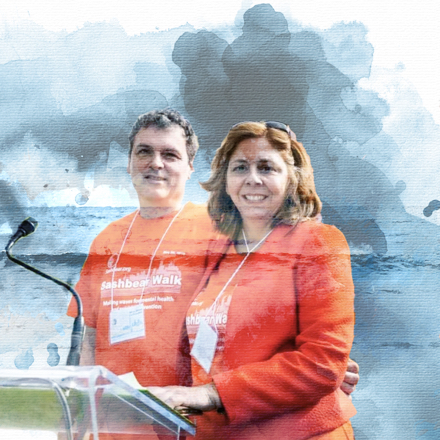
Menu and Courey hope to provide other families with the robust support and skills they wish they had access to when Sasha was struggling. The first time Menu and Courey ever received any kind of caregiver support was during Sasha’s treatment when they attended a family group for loved ones with BPD. Menu said he was surprised to find that although everyone in the group had the best intentions, the way they were interacting with their loved one with BPD was actually making things worse.
“I thought that was a tragedy because how can families that are trying to be so helpful actually be making things worse?” Menu said.
One of the major reasons families struggled to connect is because they don’t know how to validate the experiences of their loved one. To illustrate this point, Menu shared an example from Sasha’s childhood.
When Sasha was around 10 or 11 years old, the Menu Courey family went on a trip together. During the trip, Menu and Courey got into an argument, so Menu parked and started to take a walk to cool off. Sasha ran after him and said, “Come back to the car, don’t leave!”
After explaining to her multiple times he wasn’t actually leaving, just taking a walk, she gave up and went back to the car. Eight years later, Sasha told him the experience made her feel abandoned.
“I understand now that she absolutely felt abandoned, that she felt horribly abandoned. And yet I did not abandon her — that wasn’t my intention at all,” Menu explained. “But it doesn’t matter what my intentions are, what people feel is real — it’s a real experience to them.”
Menu and Courey learned validating a loved one is not the same as agreeing with them. In this situation, Mike didn’t agree that he had abandoned Sasha, but he learned later that he could acknowledge how she felt and talk to her about those emotions.
The experience of a loved one with BPD feeling abandoned comes up a lot in Family Connections. He’s now able to advise family members to respond in a validating way.
“Stop trying to say, ‘I didn’t abandon you,’ and instead go to the emotions of the person who felt abandoned. It’s more important to pay attention to that,” he explained.
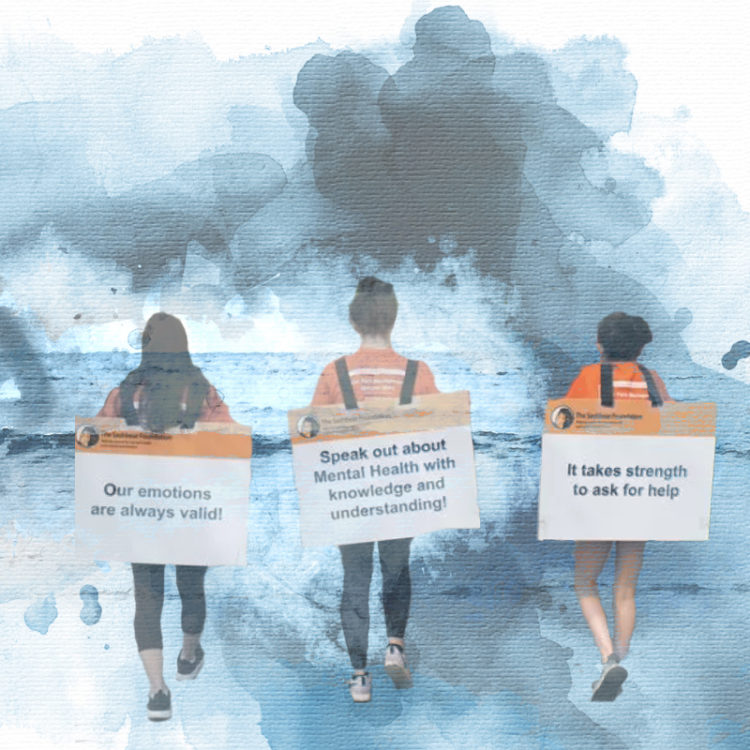
Riding the Waves of Borderline Personality Disorder
Another barrier people with BPD face is treatment inaccessibility. Part of this has to do with the general belief that people with BPD need specialized care. Not only do specialists cost more money, but there also aren’t as many who specialize in BPD as there are for more well-known mental illnesses like depression and anxiety.
Courey took Sasha to the U.S. to receive specialized treatment for BPD because there were no options available where they lived in Canada. Despite having parents who were willing to do anything to help, Sasha wasn’t able to continue with her inpatient treatment (that included DBT skills) because of the overwhelming cost. Sasha’s program averaged about $1,500 a day.
“Sasha said in a journal that the DBT treatment was as essential as water for her to survive. Those skills should be free,” Courey said. “We need to make those services affordable and accessible because there are too many suicides happening because people don’t have access to services.”
Though she benefited from using DBT skills, her parents believe she didn’t have enough time with the skills to combat the years of maladaptive coping mechanisms she was used to.
“For Sasha, because she didn’t have any treatment, her suicidal thoughts were always in the background. It always felt like she was always walking on a tight rope and her life was at risk,” Courey said. “If she would have had access to affordable, accessible treatment, she would be alive today because she really loved life.”
Chan is the first to admit dialectical behavior therapy (DBT) saved her life.
“For the first time in my whole life I have this toolbox of skills that I can go to — you know, open it up and look inside and say OK, ‘I need this,’ take that out, ‘I need that’ take that out. I can manage my feelings now.”
Chan went through a breakup recently, and although she said her brain immediately reverted to suicidal thinking, she reached out to her doctor and she’s been able to work through the painful feelings. When asked how this recent breakup experience compared to the one she went through at age 16 she said:
I think that the feelings were the same, it was the intensity that was different. Me being able to recognize it and modulate my response to it [helped]. It didn’t make it any less painful, but I didn’t feel like my world was going to implode… I was able to live through that without totally freaking out and losing it.
Since starting her treatment journey over 35 years ago, Chan said she doesn’t get knocked down by the waves of BPD as much anymore. “I don’t tend to experience those great big huge feelings anymore — that’s really tempered for me,” she explained. “I can recognize my triggers and interrupt the feelings before they get unmanageable.”

To sign up for an offering of NEA.BPD’s Family Connections course in your area, click here. Folks in Canada can sign up for the course through NEA.BPD’s affiliate organization The Sashbear Foundation by clicking here. Please note the course is designed for family members only and is not available in every location. If a course is not available in your area, you may be offered the opportunity to participate in NEA.BPD’s online Family TeleConnections (TLC) program where participants can meet each week virtually.
If you live with borderline personality disorder and experience chronic suicidal thoughts, please reach out for help. You can contact the Crisis Text Line by texting “START” to 741741, or post on The Mighty with the hashtag, #CheckInWithMe to get support from people who have been there.
RELATED:

